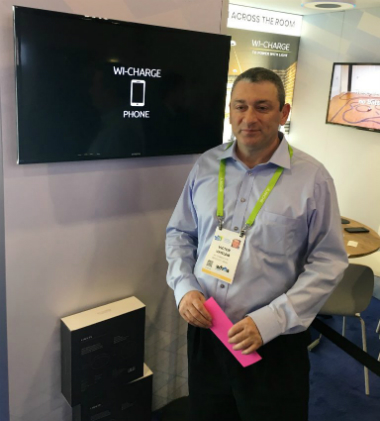Smart home and connected devices again shined at CES this year. Although the variety of gadgets and the level of integration have seen improved, some problems and limitations in the industry are also floating up. Among all, the biggest two are battery power and valuable application from the IoT data.
Smart home and connected devices again shined at CES this year. Although the variety of gadgets and the level of integration have seen improved, some problems and limitations in the industry are also floating up. Among all, the biggest two are battery power and valuable application from the IoT data.
Wireless charging emerges
When more and more devices at home become connected, how many chargers and power outlets do we need?
In the mature smartphone market, consumers are just seeing the adoption of wireless charging. Few years ago, Swedish furniture maker IKEA released a set of home furnitures embedded with Qi wireless charging pad, such as desks, lamps and nightstands. And just last year, Apple announced its first iPhone model supporting Qi wireless charging technology as well as its wireless charging accessory.
 Victor Vaisleib, the CEO of Wi-Charge
Victor Vaisleib, the CEO of Wi-Charge
In the smart home industry, the need of wireless charging is also emerging. Most battery-powered door locks and security cameras claim to have three to six months of battery life. However, the real power consumption varies by a couple of reasons, such as home Wi-Fi coverage or activity frequency.
“Take security camera Arlo as an example. When you go down and see the review on Amazon, some customers only get one to two weeks of battery usage,” said Victor Vaisleib, the CEO of Wi-Charge. “Three to Six months of battery life is under some assumptions, like Wi-Fi coverage perfect or the camera doesn’t take much movements and activities. The real situation sometimes get people frustrated.”
Seeing there’s no battery-powered security cameras in the market five years ago, as the one of the reasons that Wi-Charge created their wireless charging solution.
Its technology delivers power between transmitter and receivers using focused beams of infrared light. The transmitter works when connecting to a standard power outlet, and it finds receivers to charge the devices automatically. With the connected devices installed Wi-Charge receivers at home, they could be charged automatically and wirelessly.
Wi-Charge presented its technology at CES 2018, which powered connected trains to run on tracks the whole time at their booth. According to Vaisleib, the system works now up to five meters, and the company is experimenting much longer distance such as 100 meters with bigger receivers.
Due to using infrared light instead of other technologies, the unharmful factor has made the company receiving the FDA approval in the US. Wi-Charge will focus on working with manufacturers in two areas – mobile and IoT devices – and will launch the solution later 2018 in the US and some region markets in Asia.
The company expects to see adoptions in areas like coffee shops and offices first. For example, current seats equipped wireless charging pads in the coffee shop still need to be close to power outlets. That accounts only 20% of the seats in one shop normally. With Wi-Charge’s technology, more seats can be powered by this technology.
When more smart home manufacturers start to adopt this technology, Wi-Charge’s solution is expected to be seen in some new buildings and homes one day.
Things are connected – What’s the value?
 Josh Pederson, Director of Product
Josh Pederson, Director of Product
Management at Ayla Networks
With the growing amount of devices become connected in our homes, the amount of gathered data is also increasing at the same time.
However, according to Josh Pederson, the director of Product Management at Ayla Networks, “Some manufacturers are still struggling to find value in IoT and being connected in the first place.”
What’s the purpose to have a connected refrigerator or a smart washing machine? Why it’s connected and then makes user’s life better?
Pederson takes data analysis and device management solutions of Ayla platform as an example. After gathering the data from a connected dishwasher, the system is able to know that dishwashing liquid will run out next week and can connect to e-commerce platform and deliver a new one then.
“Proactive support tool can increase customer satisfaction and support use cases,” said Pederson. Similar predict monitoring capability can be applied on home renovation or gadget repairment.
In addition to rolling out more and more various connected products for home, manufacturers can also think about how to create a must-have value for users with the connected gadgets – in order to differentiate itself from other companies that have similar products.